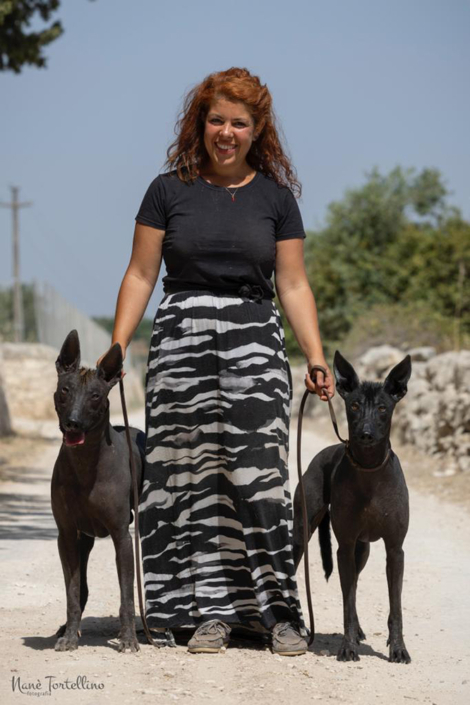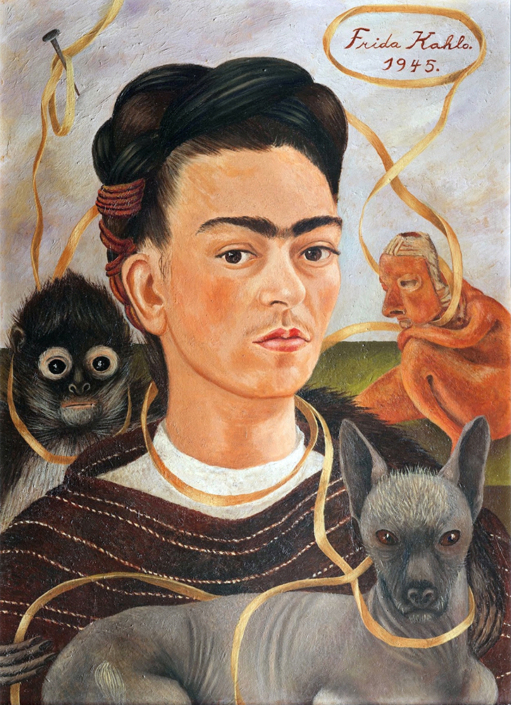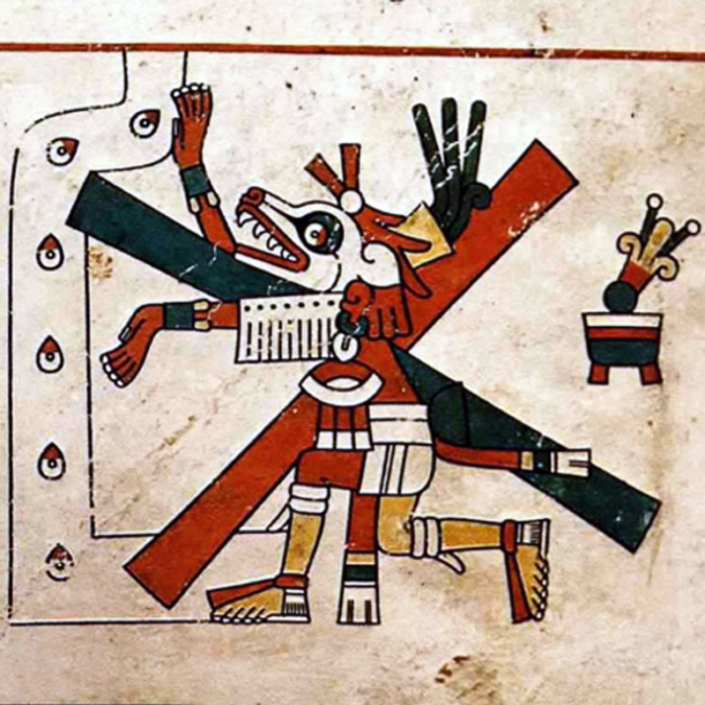An ancient, uniquely rare breed named for an Aztec god.
Xoloitzcuintle (pronounced show-low-itz-queentli), is sometimes called Xolo (show-low) for short, or Mexican naked dog.
by Nadia Vecchione
The origins of the Xoloitzcuintle date back over 3500 years to indigenous populations in Mexico and Central America, including the Maya and Aztecs. Their name comes from the Aztec god Xolotl, a deity associated with the underworld, lightning, and death, depicted with a human body and a dog’s head.
According to mythology, Xolotl created these dogs to accompany the souls of the deceased to the afterlife at the end of their earthly life. Some believed that it was the Xolos themselves who decided which soul deserved to reach the Mictlan, the land of the dead. Due to this belief, mistreating Xolos was considered to bring great trouble, as they would not assist in crossing the bridge between the earthly realm and paradise.
Furthermore, Xolos were commonly associated with miraculous healing powers. According to beliefs, being a warm-bodied dog, they were thought to cure a wide range of health issues, from toothaches to insomnia, asthma, and arthritis. In the sixteenth century, Christopher Columbus mentioned this same breed, using the phrase “strange hairless dogs,” referring to the Xoloitzcuintle. This is why the Xoloitzcuintle is considered the oldest canine breed in the Americas.
The association of Xolos with death and the afterlife might lead one to assume they are scary dogs, but nothing could be further from the truth. Xolos are joyful and playful dogs that form loving bonds with their human families.
Today, the Xoloitzcuintle has become an icon of popular culture. From Frida Kahlo’s paintings to the Pixar animated film Coco, where the Xolo named Dante appears, the popularity of Xolos has soared.
Frida Kahlo, in particular, is deeply associated with the breed in modern culture. Her strong connection to Mexican culture and her roots in Aztec mythology are expressed in various ways throughout her artistic career. Many of her paintings and photographs depict her with Xolos, and she even wrote poems about these beloved companions. In most of her portraits with a Xolo, it is her first and most cherished Senor Xolotl.
Since 2019, the Museo de El Carmen in Mexico City has hosted an entire exhibition on the cultural significance of Xolos, and the Xoloitzcuintle is the national dog of Mexico.
It is said that the Xoloitzcuintle breed was one of the first, if not the very first, to be recognized by the AKC in the late 1800s, only to be excluded due to the risk of extinction. It was not until around the 1950s that a sufficient number of specimens were obtained, ensuring the preservation of this breed that, despite its 3000 years of history, remains nearly unchanged to this day.
Following its reappearance, the Xoloitzcuintle was finally recognized by the American Kennel Club in 2011.
A breed with many untold stories, of which little is known, especially in Europe where it is still not widely spread. When one encounters an Xolo specimen, the tendency is to be fascinated and intimidated at the same time. Those fortunate enough to meet them can testify to the sensitivity of these ancient souls, constantly surprising us. Today, the Xolo is a life companion naturally predisposed to be the perfect element of a family, as its origins have shaped it: gentle and curious towards other creatures, devoted to every family member, while retaining its independence. Despite being an energetic dog that enjoys activities, it also appreciates the calm of home life.
Contrary to what one might think, the total or near absence of hair in the hairless version does not make it delicate. Taking care of an Xolo is not much different from caring for any other breed, except for the opportunity to share beauty products! Xolos generally enjoy excellent health that does not require special attention, apart from routine check-ups, and their average lifespan is estimated at around 14 years. They can also be companions for those who suffer from allergies to fur but don’t want to give up having a four-legged friend, although they are not completely hypoallergenic.
The primitive nature of the Xolo is not for everyone; indeed, they are dogs with great sensitivity, and their well-being requires appropriate physical and verbal approaches. Gaining their trust can be challenging for those accustomed to very different breeds.
The Xolo is an ancient and natural breed, shaped by evolution rather than selective breeding. An Xolo is moderate in all aspects of type and conformation, never extreme or exaggerated. Today, the breed serves as both a guard and a companion. The Xolo has a clean, graceful profile that combines elegance and strength. There are two varieties, hairless and coated, identical except for the coat and dentition. In the hairless variety, the main characteristic is the total or near-total absence of hair. In the coated variety, the coat is short and flat. In terms of conformation, all three sizes are lean, robust, well-muscled with a spacious chest and moderate bone. The Xolo’s outline is rectangular, and the distance from elbow to ground is equal to or slightly greater than the distance from withers to elbow. In a typical Xolo, the temperament is calm, tranquil, aloof, and alert.






